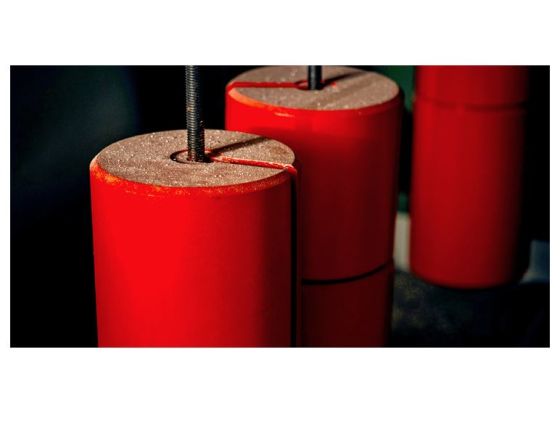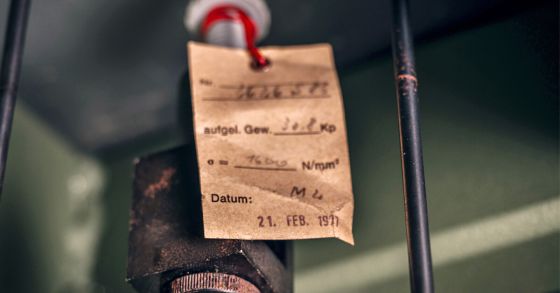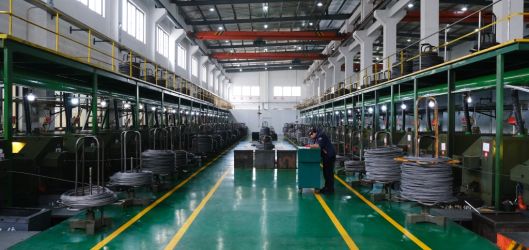
fischer fixings takes us through one of its long-term fixings tests...
Standing still as progress? Yes, in rare cases. One example is the long-term test that fixings expert fischer is carrying out with its frame fixing S10 R-G 135. Since it was placed in concrete over 40 years ago at fischer's headquarters in Waldachtal, the test subject hasn’t moved one millimetre. It is therefore getting everything right, and its inaction demonstrates quality.
The long-term test with the fischer frame fixing S10 R-G 135 began on 21st February 1977. At the time, the test object was a true innovation. As the world’s first frame fixing for facades it enabled the admissible installation of high loads in masonry such as brick. A particularly solid and tough plastic was used in order to manufacture the product: polyamide. Employees in the development test room of the fischer Group of Companies still test how long the anchor will hold test to this day, with no end in sight. Decades have come and gone. But the anchor has remained precisely where it was placed in concrete almost exactly 42 years ago.
“The fixing has barely moved,” says Joachim Lehmann, Head of the fischer development test room at the headquarters in Waldachtal. He points to the test report: “As you can see, you can’t see anything.”

In order to test its long-term behaviour, the anchor was placed in concrete with a suitable zinc-plated screw. It fastens a tension adapter that serves as an attachment part. A 160 kg weight is attached to the tension adapter, which is equivalent to double the permissible load. In addition, certain general conditions must be met. The room therefore has a temperature of 23°C with a constant humidity of 50%. The long-term behaviour of the S10 R-G 135 is examined with precision through the constant centric tensile loading under temperature-controlled conditions.
The frame fixing has carried the constant load without issue. The initial slip quickly stabilised. This can be attributed to the fact that the anchor’s polyamide expands through the screw’s setting process, which it quickly recovers from. From this point onwards, the curve profile indicates consistent values. The dial gauges attached to the test setup also show that the anchor has merely moved by a tenth of a millimetre in around 42 years.
“A long-term test such as this demonstrates fischer’s product quality requirements and the thoroughness with which it is tested,” says Lehmann. To put it in comparison, nowadays an anchor has to be tested for at least 3,000 hours in order to be approved before subsequently being extrapolated over 50 years in accordance with the mathematical FINDLEY approach. The advantage of the FINDLEY approach is that a realistic curve can be calculated with just a few parameters. In order to substantiate this theory in practice, the long-term behaviour of our frame fixing S20 has been examined for approximately 368,000 hours.



